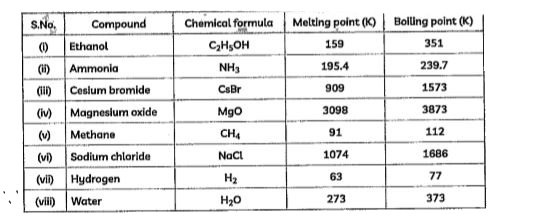Case 1: When an element composed of atoms that readily lose electrons (a metal) reacts with an element composed of atoms that readily gain electrons (a nonmetal), a transfer of electrons usually occurs, producing ions. The compound formed by this transfer is stabilized by the electrostatic attraction (ionic bonds) between the ions of opposite charge present in the compound. For example, when each sodium atom in a sample of sodium metal (group 1) gives up one electron to form a sodium cation, Na+, and each chlorine atom in a sample of chlorine gas (group 17) accepts one electron to form a chloride anion, Cl− the resultingk compound, NaCl, is composed of sodium ions and chloride ions in the ratio of one Na+ ion for each Cl− ion.

Similarly each calcium atom (group 2) can give up two electrons and transfer one to each of two chlorine atoms to form CaCl2 which is composed of Ca2+ and Cl− ions in the ratio of one Ca2+ ion to to Cl− ions. A compound that contains ions and is held togethr by ionic bonds is called an ionic compound. The periodic table can help us recognize many of the compounds that are ionic. Ionic compounds are solids that typically melt at high temperature and boil at even higher temperatures. The melting and boilign points of some common compounds is given below.
Melting and boiling points of common compounds

Which of the following statement is true about ionic compouds?
I. Ionic compounds are crystalline solids
II. Ionic compounds are soluble in solvents such as kerosen and petrol.
III. Ionic compounds conduct electricity when dissolved in water.
IV. Ionic compounds conduct electricity in the molten state.
Both I and II
Both I and III
I,II and IV
I,II and IV
The correct Answer is:C
Explanation: Ionic compounds are generally crystalline solids and hard due to the strong force of attractiioin between the positive and negative ions. They are generally brittle.
These conduct electricity when dissolved in water as its solution in water contains ions. These conduct electricity in the molten state as the electrostatic forces of attraction between the oppositely charged ions are overcomes due to the heat.
Howevrer, these do no conduct electricity in the solid state due to their rigid structure.
Ionic compounds are soluble in polar solvents such as water adn insoluble in solvents such as kerosene, petrol etc.
Topper's Solved these Questions
Similar Questions
Knowledge Check
When an atom loses an electron
AAtom acquires negative charge.BAtom acquires positives chargeCElectron acquires positive chargeDThe algebraic sum of charge present inside an atom remains sameAn ionic bond is the electrostatic attraction between positive and negative ions which are formed by two different elements when
Aboth have low negative electron gain enthalpyBboth have high ionization enthalpyCone of the elements has low ionization enthalpy and the other has a high negative electron gain enthalpyDone of the elements has high Δ1H and the other has a low negative ΔegHA bond formed by the transfer of electrons between atoms of the elements is called
Aionic bondsBcovalent bondsCco-ordinate bondDHydrogen bond
By the transfer of electrons, illustrate the formation of bond in magnesium chloride and identify the ions present in this compound.
View SolutionAn atom that loses one or more electrons to form a positive ion is called a ____
View SolutionAn atom that gains electrons becomes a negatively-charged ion called _________
View Solution(a) Show the formation of magnesium chloride and sodium chloride by transfer of electrons.
(b) Identify the ions present in these compounds.
(c) Why do ionic compounds not conduct electricity in the solid state ?
View Solution(a) Show the formation of magnesium chloride and sodium chloride by transfer of electrons.
(b) Identify the ions present in these compounds.
(c) Why do ionic compounds not conduct electricity in the solid state?
View Solution
